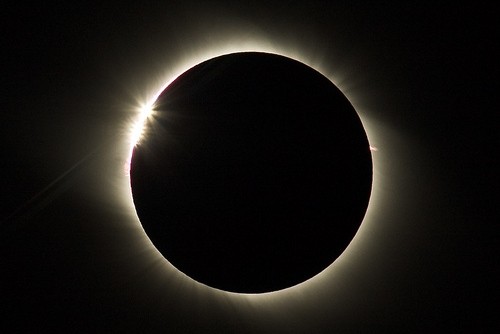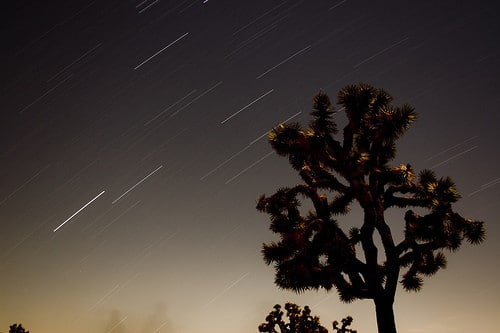You don’t have to wait for aliens to see amazing extraterrestrial (not-originating from Earth) phenomenon. If you aren’t lucky enough to see a flying saucer at one of these UFO sightseeing hotspots there are plenty of other amazing things to see in the skies. These UFO alternatives give you a great chance of actually seeing something, are free, and don’t stop you from looking for UFOs while you’re at it.
1. Auroras
Caused by the collision of charged particles in the Earth’s atmosphere and solar wind from the Sun, the aurora borealis (northern lights) and aurora australis (southern lights) are truly an amazing sight. You can view the northern lights from places like Alaska, Canada, and Scandinavia during the fall (September, October) and spring months (March, April).

The southern lights are visible around the Antarctica, the tip of South America, and parts of Australia during the winter months of March through September. You can see auroras from anytime of the year but like any weather event they vary. You can get a good idea of where auroras are occurring right now by looking at the maps produced by the NOAA POES satellite.
You’ll get the best of seeing an aurora during a period of high solar (sunspot activity) which is set to increase from now until peaking in 2013 and 2014, so book your trips.
2. Eclipses
Unless you were in parts of Asia on Wednesday you missed the century’s longest eclipse. NASA keeps track of anticipated solar eclipses, the next two coming on July 11, 2010 across the Cook Islands, Easter Island, and South America. You don’t have to wait that long to see an eclipse though, there are a number of lunar eclipses scheduled to be visible all over the world before then.

3. Meteor Showers
There are good number of annual meteor showers that are easily seen provided you can get a few hours drive from any big city lights. The Perseids are scheduled for the evening of August 12th this year and the Orionids for October 21. Those dates are for North America so contact your local planetarium for the exact times, where to look in the sky, and a star chart (which are mostly available on their websites).

Other Less Predictable Space Events
- Comets -Harder to predict than meteors, news of the brightest comets usually gets out when they’re close. Get in touch with your local planetarium (astronomers are a friendly bunch) or local college’s astronomy department to find out more. Also, almost guaranteed to return is Halley’s Comet so open your calendars up for mid-2061.
- International Space Station – Ok, it’s not extraterrestrial but it is cool to see something terrestrial in space. NASA has a great map updated by the minute on the best places to see it.
- 8 Planets – We won’t get Pluto involved since it’s not visible with the naked eye, but the other 8 planets are. The further you are from city lights the better and Bill Arnett has a list of where to see each planet.
The SETI Institute also as a great set of links of more space-related things to see, projects for kids, and resources for teachers.
All Or Part Of Your Next Trip
You can plan an entire trip around seeing the aurora borealis or make seeing Jupiter part of your next camping experience. One thing I do recommend that every travelers does at least once is go to a remote place (there are many on Earth, many of the Pacific islands are good) and look up at the stars. It’s an incredible sight to see an arm of our Milky Way galaxy and to leave knowing all of those stars are always there, usually hidden behind city lights.
There is a lot to see from our small corner of the universe and any time you look up at the sky you’ve got the chance to see a stray shooting star (meteor) or even that UFO you’ve been looking for.
[photos by: BL1961, n0ll, retro traveler]









I’d love to see the northern lights.
I really want to catch them next time I’m in Sweden. Eclipses too keep eluding me. Seems like I’ve been leaving right before the last few eclipses.
I’d love to see the Northern Lights. I believe there’s a cool event coming in August, when we’ll be able to see Mars. (Don’t quote me on that, though, but it would be cool, wouldn’t it?)
Let me know if you find out more. Mars is a good bet and pretty easy to see but sometimes it gets low enough in the sky to really be a sight. Those inner planets are great to watch through cheap telescopes as well.
I’d love to see a meteor shower. Wonder if we can see it from outside Toronto? Hmmm…
I think the Perseids should be visible if you drive about an hour from the city lights. They peak on the evening of Aug. 12 this year but can be seen through the 24th.
Interesting stuff you got here.. Just promted me to add you to my rss reader. Thanks.
I appreciate it, and glad you enjoy the content – thanks!